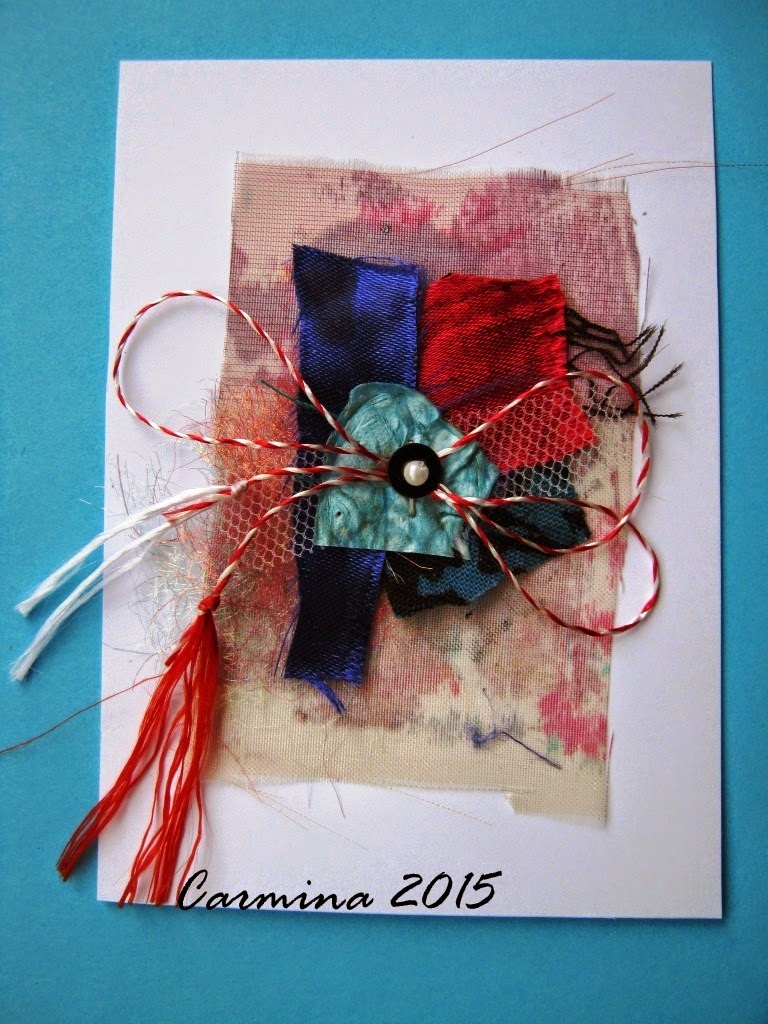1 Martie, martisor...
Ma bucur cand vine 1 Martie. Este un moment cand stim ca vom scapa de iarna. Timpul e foarte frumos, sunt temperaturi pozitive, se anunta 14 grade...
Dupa ce a trecut Valentin's day si Dragobetele, acum ne pregatim de Martisor si 8 Martie...care au mai multa semificatie pentru romani.
Dupa ce am tot amanat sa ma ocup de martisoare, azi am avut un mare entuziasm si am realizat cateva martizoare care vor merge la niste prietene. Probabil ca a fost necesar sa aman momentul, pentru ca nu am avut inspiratie, sau am asteptat ca sa se "coaca" ideile.
Anul acesta am facut altceva decat in anii trecuti.
Martisoarele mele nu seamana deloc cu martisoarele traditionale.... asa le vreau eu !
I'm glad when it comes March 1. It is a time when I know that we will rid of winter. Time is very nice, the temperatures are positive, it announces 14 degrees ...
After passing Valentine's day and Dragobetele, now we are preparing for March 1-Martzisor and March 8 ... which have more significance here in Romania.
After I delayed to deal with Martzisor, today I had a great enthusiasm and I made some Martzisors, as gifts for some friends. Perhaps it was necessary to delay the time, because I had no inspiration and I expected to "ripen" ideas.
This year I had other ideas as in previous years.
My March amulets nothing like traditional martisoare ....
Lucrul incepe cu o mare "dezordine" creativa...
The work starts with a great creative "disorder" ...
Apoi lucrurile se sistematizeaza, se clarifica tehnologia si trec la treaba pana termin totul...
Am folosit bucatele de voal pictate, ca suport, care au fost lipite pe carton. In colaje am pus bucatele de textil, fire angelina, staniol, tyvek, tulle, margele...si bineinteles, martisoare.
Then it systematizes the things, I clarify the technology and get to work, to finish everything ...
I used pieces of painted gauze as support, which were pasted on cardboard. In collage I put pieces of fabric, angelina threads, metallic foil, Tyvek, tulle, beads... and of course, martzisoare.
Martzisor is made of two twisted silk threads, white and red, which ends tassels.
Iata ce a iesit!
Here's what came out!
Sa aveti o primavara minunata!
Have a wonderful spring!




















